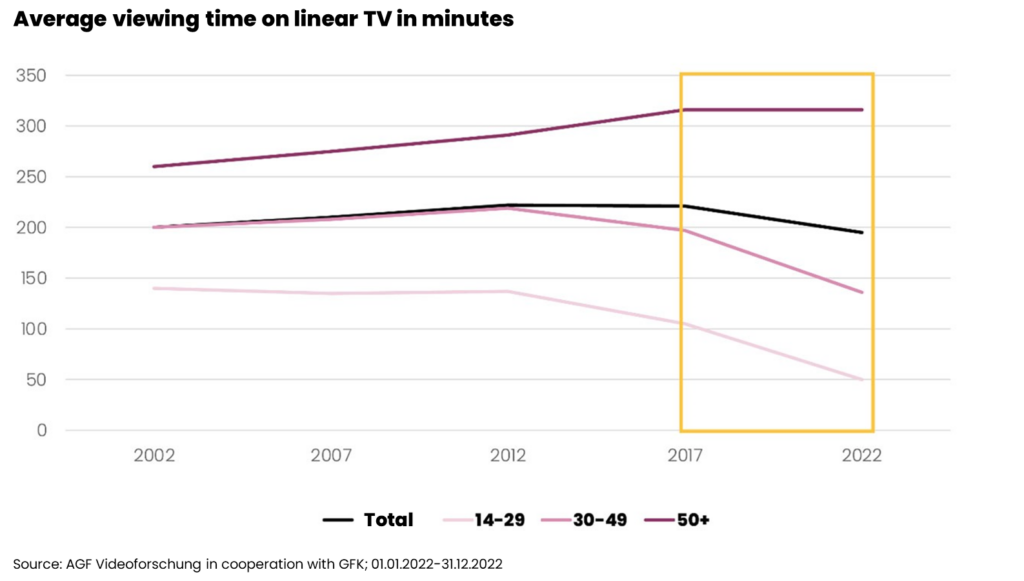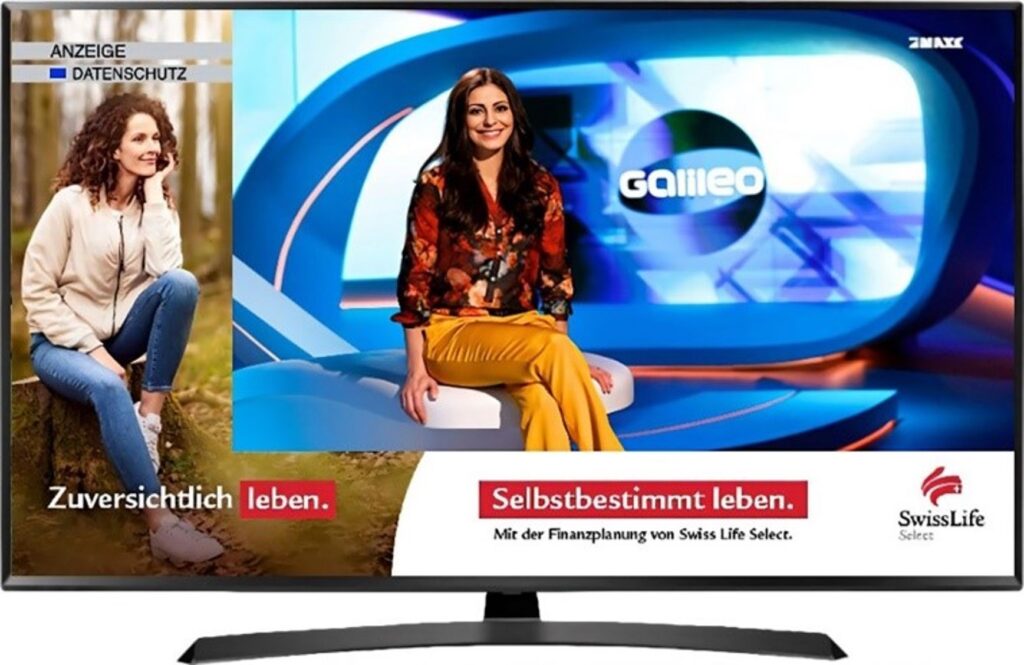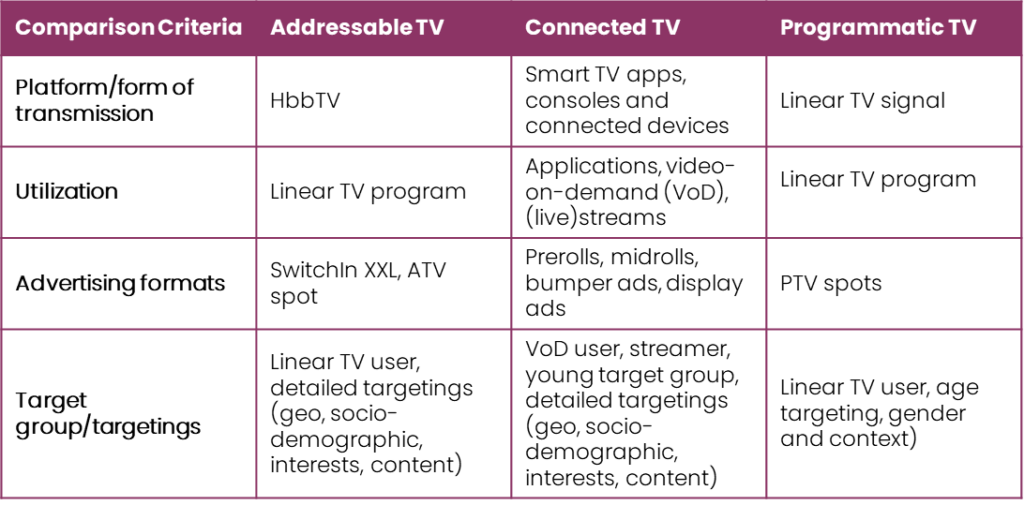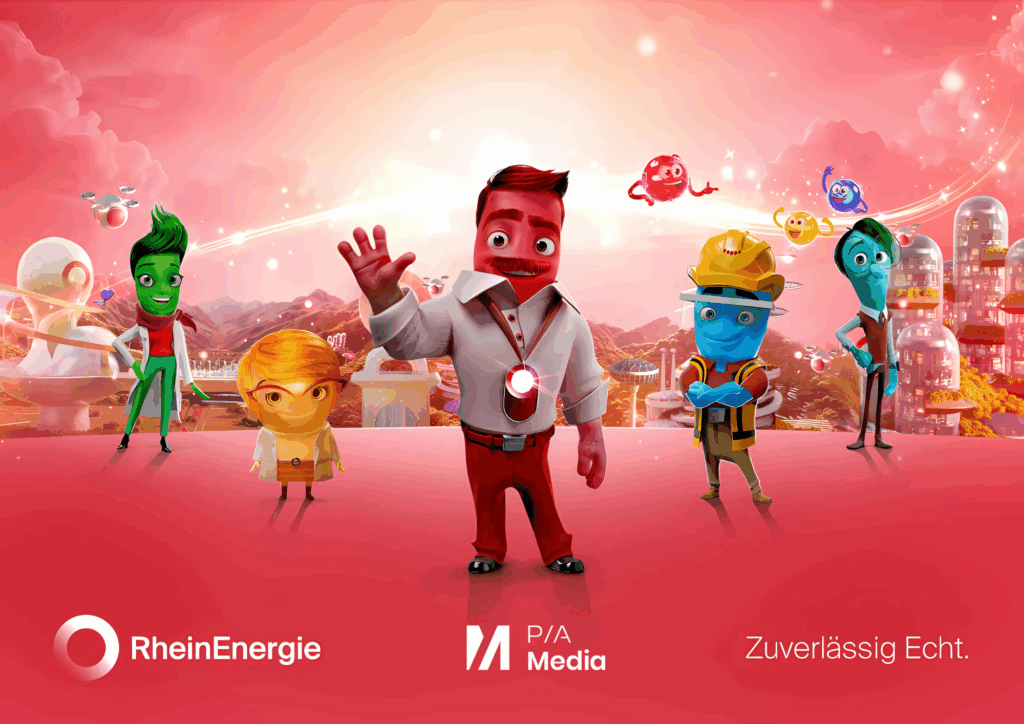Digitalization of TV changes marketing
For many decades, TV was regarded as the undisputed leading medium for building brands and achieving fast and high reach. However, the last few years in particular have shown that this will not remain the case forever. Declining reach and duration of use in TV, particularly in the younger target groups of 14 to 49 year olds, appear to be unstoppable. In the over-50 age group, viewing time has remained relatively stable to date, but the medium will not be able to rest on its laurels in the long term. After all, the 30 to 49-year-olds of today are the over-50s of tomorrow.

But even if the reach of linear TV is declining, this does not mean that TV screens will remain black. Streaming is the new television and more than 60% of Germans already regularly stream video content via video-on-demand platforms such as Amazon Prime Video, Netflix or Joyn. The TV set is the most popular device for consuming streaming content, which is why it will remain an integral part of German living rooms.
However, in order to continue successfully addressing target groups with advertising on the big screen, new ways of addressing them digitally are needed: Advanced TV. Advanced TV serves as a generic term for the newly established TV advertising formats Addressable TV, Connected TV and Programmatic TV.
Addressable TV for targeted advertising on linear TV
Addressable TV (ATV) is the target group-specific control of TV advertising in linear TV programs on TV sets with an Internet connection and is implemented via the so-called HbbTV standard. HbbTV stands for “Hybrid Broadcast Broadband TV” and is an official standard of the European Telecommunications Standards Institute (ETSI). This enables the linking of linear television content with non-linear content from the World Wide Web. The transmitted content offers both users and advertisers a wide range of interactive possibilities, such as spot overlays on live TV or access to microsites. The standard format in the addressable TV sector is the SwitchIn XXL, an L-shaped banner that wraps around the image of the current program after switching on or off.
There is also the so-called ATV spot, which can be between 10 and 30 seconds long and is placed in the regular TV advertising block. The special feature here is that there is a dynamic fade-in of a running spot, which viewers do not actively perceive. In contrast to traditional linear TV, viewers of the same commercial break do not necessarily see the same commercials.

Addressable TV is characterized by a variety of targeting options. For example, campaigns can be played out based on geo- or socio-demographics, interests or content. The flexibility of campaign control and measurement options that enable programmatic booking of this form of advertising should also be emphasized. The demand-side platform (DSP) can be used to view daily updated data, for example on the number of contacts or the programs played. Short-term adjustments to running times or budgets are also possible at any time.
In direct comparison to classic, linear TV, ATV still has a limited reach. Around 12 million TV sets in Germany currently meet the necessary requirements in terms of Internet connectivity and support for the HbbTV standard. For the ATV spot, the reach is even lower due to the minimum required HbbTV 1.5 standard.
Last but not least, Addressable TV is characterized in particular by the possible interlinking options with other digital measures. For example, users who have already come into contact with an Addressable TV ad can be addressed again on other devices in the same household with the help of a household graph. This enables seamless storytelling beyond the TV set for the first time.
Connected TV as the key to the younger target group
Alongside addressable TV, connected TV (CTV) is another form of digital TV advertising that has experienced enormous growth, particularly in recent years. While addressable TV is digital advertising content on linear TV, CTV content is located within apps that are dependent on internet access and are installed either directly on the TV or on peripheral devices such as Amazon Fire TV, Apple TV or games consoles.
Connected TV as a form of advertising therefore takes place in a non-linear environment (with the exception of live TV streaming offers) and thus appeals primarily to younger user groups. By default, CTV focuses on moving image formats such as pre- and mid-rolls, which are between 15 and 30 seconds long. However, some publishers have also developed individual display options that can be integrated into the user interface of smart TVs. Connected TV is particularly impressive due to its high, efficient reach on the TV set.
While the linear TV market in Germany is dominated by the two major TV companies ProsiebenSat1. and RTL, the CTV market is much more diversified. The market is made up of international providers such as Samsung TV Plus and Pluto TV, national offerings such as Joyn and RTL+, as well as the streaming giants Netflix and Amazon. The latter have given CTV a further boost with the introduction of ad-supported tiers (e.g. Netflix and Disney+) and the launch of the ad-financed streaming platform Freevee (Amazon), while the announcement that Amazon Prime Video will be available for advertising in future has also significantly boosted CTV reach.
Similar to addressable TV, connected TV is also characterized by a high degree of flexibility and measurability. The first market research providers and tools enable the comprehensive measurement of Connected TV campaigns, making it possible to provide evidence of campaign success. Nevertheless, the CTV market requires further standardization, for example in the consistent transfer of identifiers. So far, not all publishers have included CTV IDs in the bid request, which either makes frequency capping more difficult or reduces reach by excluding non-identifiable inventory. CTV is already characterized by high reach, especially in the younger target group, and benefits from the possibilities of targeting users and households by adding geo, usage and registration data.
Furthermore, CTV is expected to be the fastest growing part of advanced TV, driven by growing user numbers and the increased introduction of ad-supported tiers of streaming platforms, which is why CTV should be part of any digital video planning in the future.
Programmatic TV for maximum reach
In addition to Addressable TV and Connected TV, Programmatic TV (PTV) has emerged as a third form of advertising in the last two years. Similar to addressable TV, programmatic TV advertising is broadcast in the linear TV program. The significant difference, however, is that it is not only shown on certain TV sets, but on every TV set in Germany throughout the entire interruption advertising block.
As programmatic TV does not require the TV set to be connected to the Internet, PTV offers a significantly higher reach. Unlike CTV and ATV, however, individual TV sets are not specifically addressed here, but rather all devices in an advertising block, as is the case with linear TV advertising. Nevertheless, the spots are optimized and billed to the booked target group via an ad server based on age, gender and contextual information. The combination of high reach and target group-optimized playout results in efficient target group CPMs. Contacts that are additionally generated outside the booked target group can therefore be classified as scatter gains.
PTV is the most recent form of advanced TV advertising, which is why some targeting and interlinking options that are already regularly used for CTV and ATV are not yet possible in PTV. For example, the targeting options for programmatic TV are limited to age and gender targeting and contextual approaches, and the integration of PTV with other digital channels is still under development. On the format side, PTV spots are used, the length of which is flexible. Static advertising media variants are not available. As PTV’s buying is also realized via a DSP, a holistic campaign overview of all moving image measures, be it addressable TV, connected TV or programmatic TV, is available for the first time. However, this has significantly increased the complexity for media planners in the TV sector. Each variant offers different advantages and disadvantages that need to be taken into account in media planning, depending on the objectives and target groups.

Conclusion and outlook
In terms of targeting, measurability and integration, the possibilities of advanced TV are already more diverse than traditional TV could ever achieve and yet the development of digital advertising solutions on the big screen is still in full swing: the possibilities of integrating CTV, ATV and PTV with each other and with other digital channels are already being actively used, but have not yet reached their zenith.
Where there are currently still gaps in the integration, bridges will soon be built to enable seamless control of TV campaigns as part of a holistic digital campaign. Targeting is already more precise today than would ever have been conceivable for traditional TV campaigns a few years ago. The use of first-party data, TV behavioral data, registration data, etc. will further improve the accuracy of targeting and, above all, the measurability of campaign success.
New players are entering the market, established streaming platforms such as Netflix and Amazon are tapping into new revenue streams through ad-financed streaming services and established TV companies are also recognizing the trend and developing their own streaming services and corresponding advertising solutions. The complexity of video planning is increasing once again as a result of digitalization. For advertisers who want to continue to reach their target groups on the big screen in the future and successfully build reach, it is therefore advisable to increasingly integrate explicit digital expertise into video planning and adjust the media mix accordingly. TV advertising is not dead, but it is changing drastically. TV is going digital and this opens up new, innovative opportunities for advertisers that need to be exploited.




